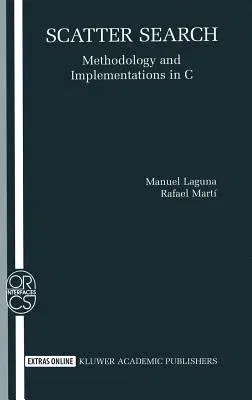The evolutionary approach called scatter search originated from
strategies for creating composite decision rules and surrogate
constraints. Recent studies demonstrate the practical advantages of this
approach for solving a diverse array of optimization problems from both
classical and real world settings. Scatter search contrasts with other
evolutionary procedures, such as genetic algorithms, by providing
unifying principles for joining solutions based on generalized path
constructions in Euclidean space and by utilizing strategic designs
where other approaches resort to randomization. The book's goal is to
provide the basic principles and fundamental ideas that will allow the
readers to create successful applications of scatter search. The book
includes the C source code of the methods introduced in each chapter.
From the Foreword:
`Scatter Search represents a "missing link" in the literature of
evolutionary methods... From a historical perspective, the dedicated use
of heuristic strategies both to guide the process of combining solutions
and to enhance the quality of offspring has been heralded as a key
innovation in evolutionary methods, giving rise to what are sometimes
called "hybrid" or ("memetic") evolutionary procedures. The underlying
processes have been introduced into the mainstream of evolutionary
methods (such as genetic algorithms, for example) by a series of gradual
steps beginning in the late 1980s. Yet this theme is an integral part of
the scatter search methodology proposed a decade earlier, and the form
and scope of such heuristic strategies embedded in scatter search
continue to set it apart. Although there are points in common between
scatter search and other evolutionary approaches, principally as a
result of changes that have brought other approaches closer to scatter
search in recent years, there remain differences that have an important
impact on practical outcomes. Reflecting this impact, a hallmark of the
present book is its focus on practical problem solving. Laguna and Martí
give the reader the tools to create scatter search implementations for
problems from a wide range of settings. Although theoretical problems
(such as abstract problems in graph theory) are included, beyond a doubt
the practical realm has a predominant role in this book....'
Fred Glover, University of Colorado

